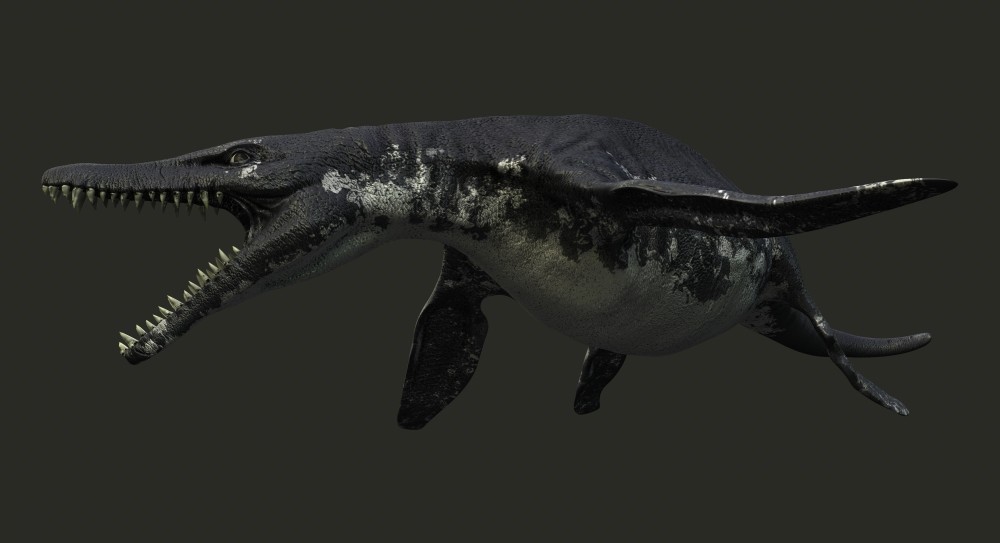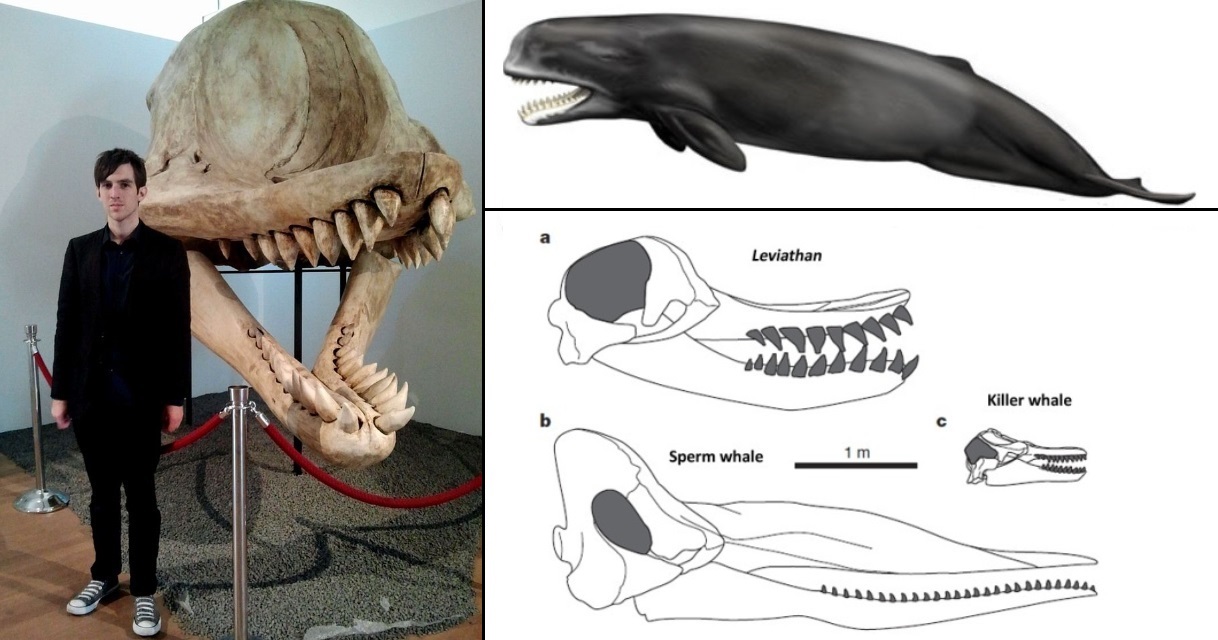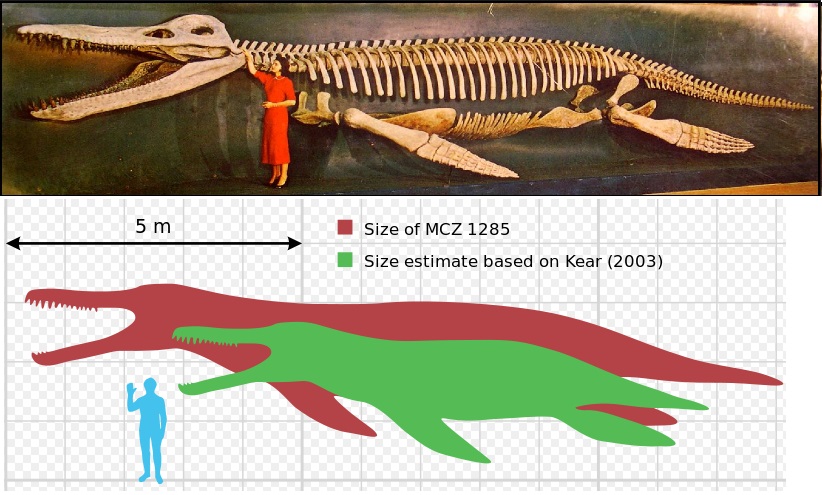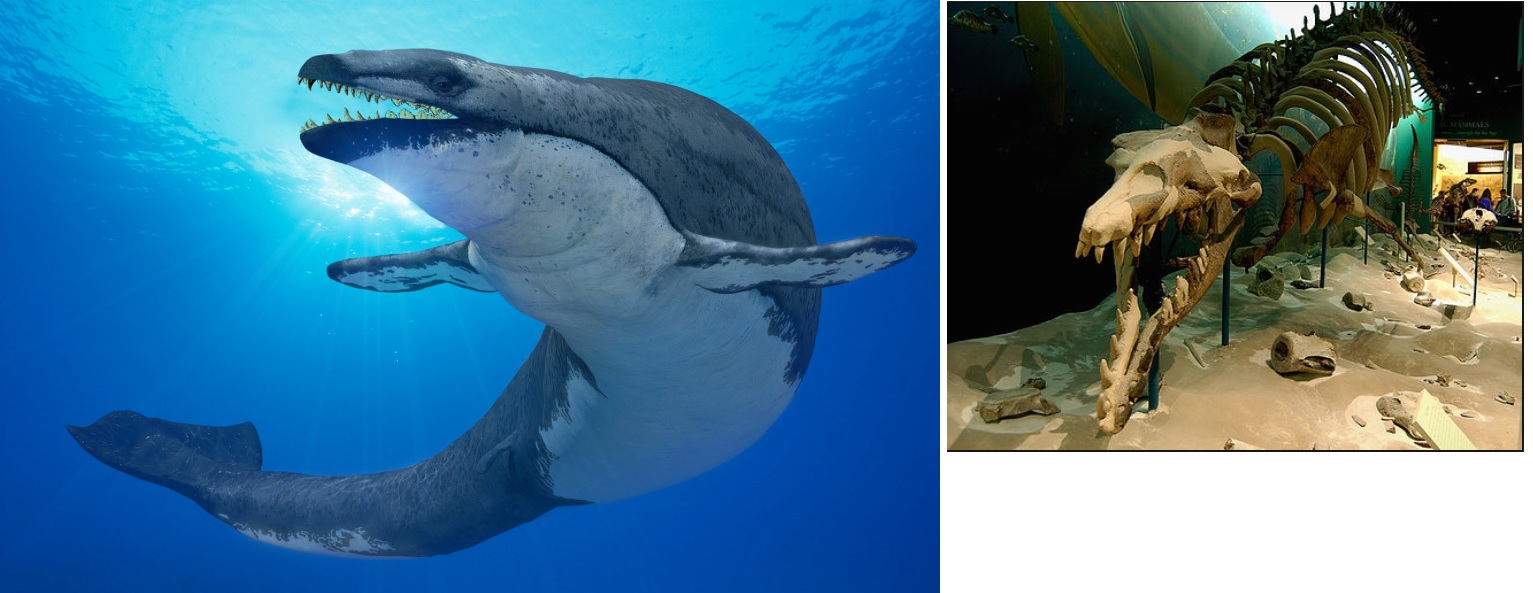
| Period: | Approximately 145 to 150 million years ago. |
| weight: | Possibly up to 15 tons. Conservative estimates speak of up to 10 tons. |
| Length: | Likely to be at a maximum of 13 meters. |
| Teeth: | Largest teeth about 30 cm. |
| Bite force: | Very high. No true consensus seems to exists. Very likely to be substantially more than that of T Rex. |
| Further characteristics: | The front flippers, are somewhat larger than other pliosaurs. Short neck. Very robust posture. |
| Period: | From about 20 million to about 1.5 million years ago. |
| weight: | Likey to be between 50 to 80 tons (80 tons for a 20m animal). |
| Length: | Likely to be between 15m to 20m. Conservative estimates speak of a max of 15, 16 meters. |
| Bite force: | Likely to be somewhere in between 10 and 19 tons. Different studies show quite some variations. |
| Further characteristics: | A "White Shark-like" appearance. |

| Period: | Many say 85 to 65 million years ago. Other estimates speak of 70 to 66 million years ago |
| weight: | Possibly 20 tons. More conservative estimates speak of about 15 tons. |
| Length: | Likely to be around 14 meters. Many scale it to be actually 15 meters. |
| Bite force: | Could not find any consensus. Likely to be the same as Funkei's, or possibly a little lower. |
| Further characteristics: | Sometimes described as a fast (or "explosive") swimming animal. |

| Period: | Estimated to have lived about 12 million years ago. |
| weight: | Likey to be in the range from 50, 55 tons (for a 15m animal). |
| Length: | Likely to be around 50 feet / 15 m. |
| Bite force: | Have not found solid estimates. Likely to be extremely high. |
| Further characteristics: | Very large teeth (36 cm) in upper- and lower jaws. Likely to have lived in groups (families?) |

| Period: | about 160 million years ago |
| weight: | Probably not more than 5 tons (10m). Likely to be less, like 3 tons (if the length is max 7.5m). |
| Length: | often estimated to be somewhere in 7m - 12m. Conservative estimations speak of 6.5m - 7.5m. |
| Bite force: | Unknown. But likely to be way less than that of Funkei or Kronosaurus or Tylosaurus proriger. |
| Further characteristics: | Relatively slender, probably capable of large accelerations. |


| Period: | Approximately 110 million years ago. |
| weight: | Possibly up to 10 or 12 tons. Some claim that it is considerably more. |
| Length: | Likely to be around 9 to 11 meters. Some say that it is a little more. |
| Bite force: | Very high. No true consensus exists. Likely to be a little lower than funkei's. |
